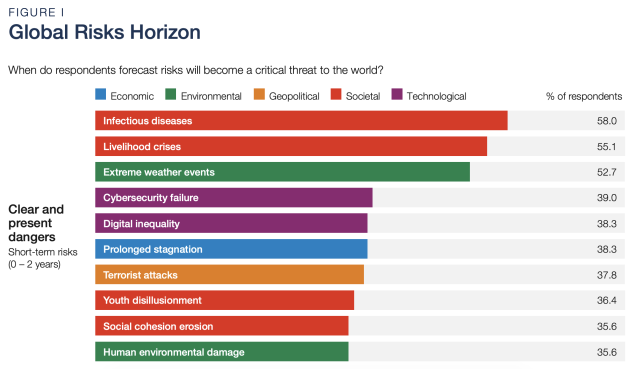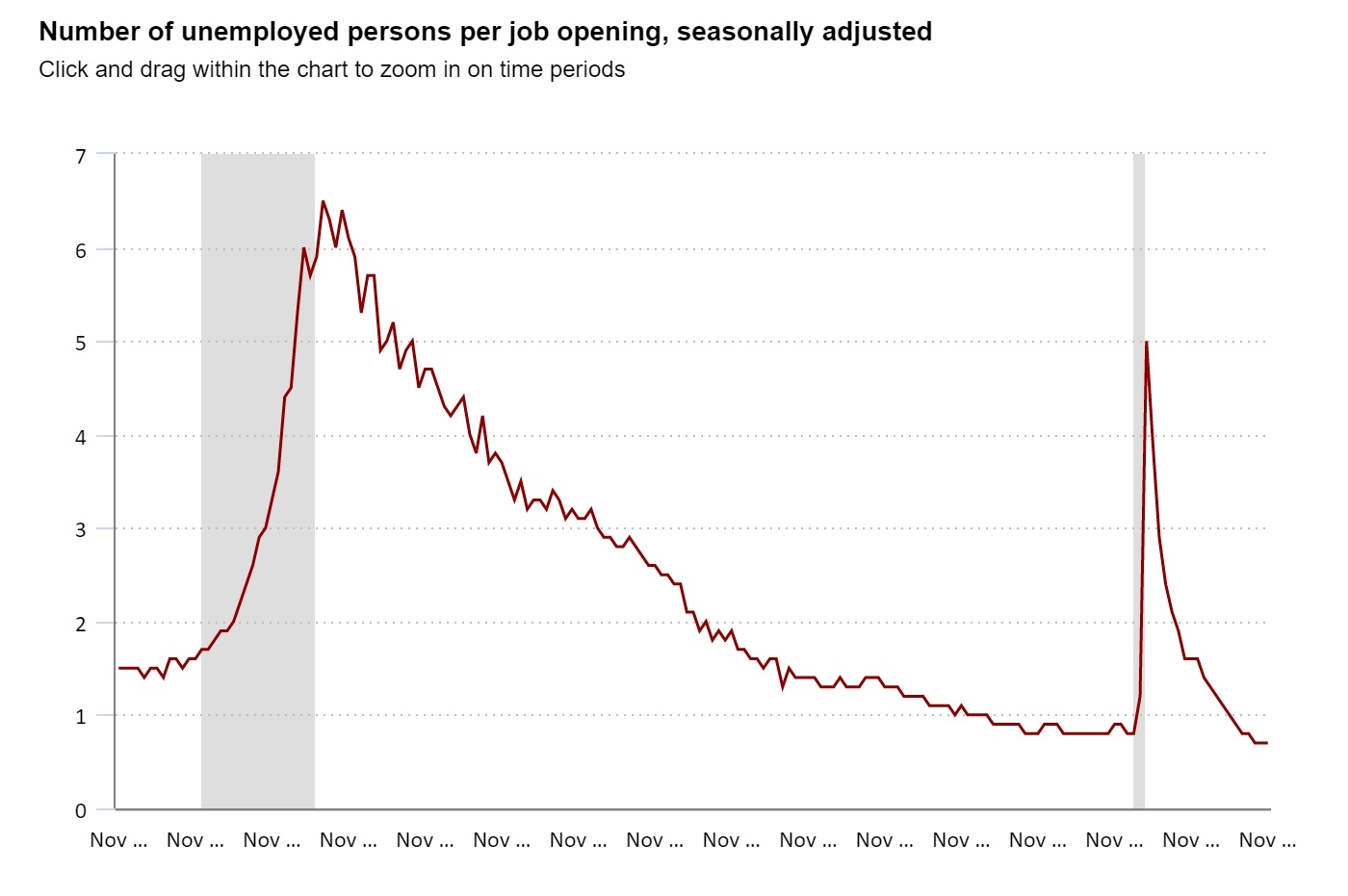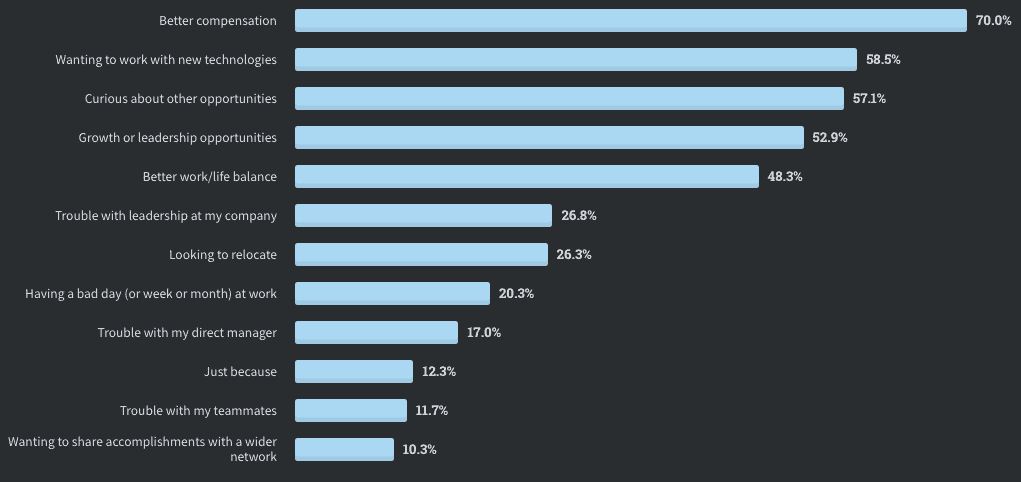
So today, I am going to introduce you to how you can land that developer job you want.
You’ll be able to claim your online code, technical questions, answers, and know how you rank compared to other techies.
You’ll be able to check your GitHub and Stack Overflow ranks, then share a verified credential to your LinkedIn profile for free.
You’ll be able to share “proof of your tech ranking” to help prove your tech skills when applying for jobs.
Where enabling trust that’s easy to prove is the end goal.
I think you'll agree with me when I say, it's really hard trusting anyone nowadays!
How does the Future look like for Techies?
The future always feels like it's running late, doesn't it? Human imagination works harder than human enterprise, but at any given moment, scientists and engineers are redesigning future technology and the world around us in big and small ways.
We don't realize it because we've lived through it. But the rate of progress over the last half-century has been abnormal – staggering in fields as broad as computing, medicine, communications, and materials science.
Still, nobody has a personal jetpack that runs on perpetual energy, so the work must continue.
Traversing a Broadening Digital Gap
Covid-19 has undoubtedly expedited the expansion of e-commerce, online education, digital health, and remote work all out of necessity. These shifts will continue to conspicuously transform human interactions and livelihoods, long after the pandemic is behind us, and that seems like a far-reaching goal right now, considering how it keeps evolving at different levels. And of course, the effects on tech recruitment trends are obvious, too.
Where there is rapid advancement, there is also the possibility to exacerbate inequality. Pollees of the Global Risks Perception Survey (GRPS) estimated "digital inequality" as a growing critical threat to the world in coming years and the seventh most likely long-term risk. Expansion of this kind requires monumental investment in up-skilling and reskilling.

This digital inequality has the potential to affect hiring practices because the industry is progressively turning to online solutions. The ability to access data and digital technologies is widening between and within countries. According to this data, this simply means, high-income countries with more internet usage would easily recruit, and job-seekers would find work easily as compared to low-income countries with less internet usage.
As many countries are looking to diversify and mesmerize varying perspectives in their organizations, tech firms and platforms will need to take notice of the increasing dissociation and find creative ways to promote and hire inclusive of those from harder-to-reach places.
Remote Work and Interviewing
Presumably, the biggest change in our day-to-day lives is the fact that so many of us are now working from home. Although the situation isn't that clear for those in the job market. Digital gypsies had always faced physical challenges, but now their indifference is being met by the rest of the world.

This abnormality has modified remote-working and resulted in the general adoption of technologies to support virtual collaboration, communication, and working from many distances. Remote workers say they’re happier than before, but the transformation brings with it a different set of challenges.
A Demanding Talent Pool to Navigate
As one of the industries to enjoy near-continuous growth over the past decade, developers faced new challenges during the pandemic, both for employers and their workers. However, during the pandemic, technological roles became even more critical, as we all came to depend on our software, like our mobile devices and computers, in our daily lives.
With the emergence of remote hiring, recruiters now have access to a global talent pool of fresh, up-skilled developers from all over the globe.
This broadening of the talent pool is both an opportunity and a challenge, and many recruiters are still figuring out how to navigate the global talent landscape.

With access to more applicants, came the challenge of receiving a lot more applicants than would likely occur with a local search. And this makes it more difficult to find top potential, especially if receiving more applicants slows the hiring process, which occurs most times.
“The 2020 World Developer Population and Demographic Study showed the worldwide developer population grew continuously by about 500,000 in 2020, reaching a total of approximately 24.5 million. Covid-19 slowed that growth though, to 2.4% versus the predicted 4%. With a larger talent pool and a streamlined remote recruiting process, tech recruiters may need to adapt to a more cut-throat environment than before. Looking at the job markets, early set-downs were the trend of the first lockdowns, but technology hiring rebounded towards the end of 2020. In the US alone, tech jobs grew by about 391,000 positions in December, with Software Developer and Application Developer roles accounting for the largest share of new positions. The boosts in jobs mean that global tech hiring will not only be about trying to stand out from the local competition but also trying to separate themselves from the conventional recruitment standards.”
Applicant Experience
Research from Glassdoor indicates that about 70% of people now look for job reviews before making career resolutions. It’s not new, but the significance of applicant experience has become the impression in recent times.
Examining the Global Tech recruiting trends helps portray a bigger picture. Unemployment is at its record lows in the US, UK, and Canada. In September 2020, there were 0.8 unemployed people per job opening in the US. This means that currently, there are more open jobs than people looking for work. Given that number a better outlook, in 2009 - it was 8 times higher, with 6 unemployed people per open job

This means that top-tier applicants now have their selections of the jobs in the market. Perks and advantages that were once ill-considered, like workplace culture and employers that respect their employees’ progress and work/life balance have now become critical decision-making factors.
To qualify that, another research from Glassdoor finds that 77% of candidates (from the US, UK, Germany, and France) would consider a company’s culture before applying there, and 56% of respondents say culture is more important than salary when it comes to job satisfaction.
Inclusion and Diversity
Diverse companies attain 19% higher revenue than inflexible companies owing to greater transformation. Providing tutelage and coaching that underrepresented groups may not have had access to in the past can promote innovation by subjecting employees to new skills and ideas.
Big tech companies began publishing annual diversity reports in 2014, but only a few gained ground, especially in hiring Black employees. Facebook, for example, went from a workforce that’s 3% Black to 3.8% in the past six years. Others also are in the low single digits. These organizations claim they hold diversity in high regard, but going through their data, the diversity they claim to have isn’t observed.

An increasing number of notable companies have improved their HR processes to access neurovariant talent; that is, people who are “outside the box” thinkers. Neurovariance, also called neurodiversity, is the idea that neurological differences like autism and ADHD are the result of normal, natural variation in the human genome.
Present-day HR tech trends prove that this technique for recruiting talent is increasing. A growing number of prominent companies have reformed their HR processes to access neurovariant talent. Among them are SAP, Hewlett Packard, Microsoft, Willis Towers Watson, Ford, Ernst & Young. Many others, including Caterpillar, Dell Technologies, Deloitte, IBM, JPMorgan Chase, and UBS, have start-ups or experimental efforts underway.
Analytics, Automation and AI (Artificial Intelligence)
More companies are endorsing gradual approaches to the three ‘A’s (Analytics, Automation, AI) introduced here, and are at the vanguard of technology recruiting trends.
Analytics – A European Union skills shortage led them to point out data analytics as one of the biggest areas of shortage that needed to be improved. Data analytics is used across talent acquisition to deliver data-driven cognizance to identify areas of strengths and weaknesses, as well as aiding in lessening the cost of talent acquisition practices.
Streamlining the recruitment technique is at the forefront of every recruiter and employer’s mind.
The clamor for data analysts has stiffened the resolve of the Australian Defense Department to come about a neurodiversity program in cybersecurity. Participants in the program with superior pattern-detection abilities were a good match with the kind of tasks data analytical roles have on offer. Hence, the case for neurodiverse hiring was particularly compelling given the skills shortages in data analytics that have burdened technology and other industries.
Automation and AI – Over the last few years, several big tech companies have tinkered with AI, machine learning, intelligent automation, and other similar solutions. 2020 was a turning point for many.

AI is trending because the technology can be efficacious without doling out a lot of energy. Companies are acknowledging the capacity of harmonizing conventional task automation with AI to provide prominent efficiency and precision of enterprise automation performance.
Resolves historically made by humans: diagnosing health issues, settling on investments, evaluating educational achievements, and rectifying legal disputes—are increasingly being assembled by sophisticated algorithms that apply machine learning to large data sets.
Recruiting and Reskilling
In recent times, recruiting departments have had to do more with less.
As claimed by a LinkedIn Study, 1 out of 2 recruiting professionals contemplates their recruitment budget to decrease. This forces recruiters to be more critical with their hiring demands while operating on a lower budget.

An equivalent strategy is re-skilling the existing workforce within the company.
At a time when developers are eager for new opportunities, this concept works well. In the 2020 Stack Overflow Developer Survey, developers asserted that wanting to work with new technologies was a high priority when looking for a new job.
Therefore, employers and recruiters provide this opportunity to esteemed employees, especially if their plan is to retain them. Providing the opportunity to work on new projects that would require an additional skill set, would help employers and recruiters retain the workforce and conserve costs with a reduced recruitment budget.

Recently, HR departments and recruiters have had to get creative with their budgets while still retaining their existing employees. And by making certain there are new opportunities for current employees, prospects of retaining them long-term would considerably increase.
Job seekers, and notably techies, should increasingly adapt to digital methods of job hunting, including online job boards, automatic job alerts, and social media. Companies and recruiters can discover thousands of new applicants by posting job opportunities on these digital platforms.
While Working on Your Coding Skills, Learn Soft Skills too
Knowing how to code means you know how to write a program. Being a software engineer at a tech company means you know how to communicate, collaborate with others, effectively learn new skills, and become part of the technical community.
It’s those skills–even more than your technical chops–that make you truly employable. Most companies would rather hire a friendly, passionate, teachable team player and train them than a technical genius who’ll butt heads with coworkers.

There’s a difference between having technical skills and being ready to contribute to a tech team.
Get Real-World Experience
Following tutorials can be valuable, particularly at the beginning, but at some point, you should begin to build projects of your own. This way you’ll encounter real-life problems and have to develop your own solutions. Plus, you can have some fun in the process of building an app or website that reflects your interests.
Brainstorm a way to solve real problems you have in your everyday life. How can that solution be translated into app or software form?

Build websites for friends or local charities for free. Once you have a few under your belt, reach out to local businesses and offer them reduced prices to work on theirs too.
Build a portfolio of the kind of work you want to do. Employers want to see examples of your work, so they know what you can do.
Once you’ve built some projects, take time to reflect on your experiences. Develop some cohesive stories about the process that you’ll be able to reference when interviewing to get hired in tech.
Build A Community and Network
It’s an old saying that it’s often not what you know, but who. And there’s a reason this advice has become canon: it’s true. Without having connections who can recommend you to companies or clients, you’re just another resume.
To build a network, you have to network. Go to events, conferences, and meetups. It’s great if you can do it in person, but you can also join online groups.
Be useful. Offer to help people; don’t just take help. Use your connections or knowledge to benefit others.
This way, you might know someone in a company who can recommend you or let you know when they’re hiring. Even without an official referral, you’re still making friends to go to for support, build things together, etc.

Heard Of TechieRank? Join!
You get to use its profile ownership verification tech to claim your online profiles, ratings and reputations.
You get to know how you rank compared to other techies. You can claim your code from your Github and StackOverflow profiles and share to your socials.
You even get to share a free verified credential to your LinkedIn, as this gets you in front of Employers and Recruiters in the six seconds before they dismiss your application!
In conclusion
"Where do you start?" That's an obvious question when considering a tech career. Should you get a new technical certification? Learn another programming language? You'll hear an endless variety of answers, largely because the technology field is so vast, with numerous career paths ranging from database administrator to network engineer.
Jobs in the tech sector are projected to grow at a much faster rate than other occupations in the next decade.
And it’s versatile, too. You can start and work your way up to any number of specialized jobs as you grow. Or you can jump straight into a field you’re interested in if you have some background knowledge.
From all that’s been said, you undoubtedly now have an idea of the necessities to getting hired and can start looking into landing a tech job. If you’re starting from scratch, you’ll want to start building relevant skills that you can put on your resume. There are several ways to gain those skills, and once you know what they are—you can get a certification, teach yourself, or enroll in a course.
Finally, what's stopping you from joining a platform where you can check your GitHub and Stack Overflow rank, then share a free verified credential to LinkedIn to stand out to employers and recruiters. For Free!
Visit TechieRank, and land that developer job you want.
Written by Damilola Ibitola. Edited by Andrew Hine, founder of TechieRank and co-founder/CEO of Reputationaire.
[1]
https://www.weforum.org/reports/global-risks-report-2022/in-full
[2]
https://insights.stackoverflow.com/survey
[3]
https://www.ibm.com/cloud/learn/what-is-artificial-intelligence
[4]
https://www.indeed.com/career-advice/finding-a-job/how-to-get-a-tech-job
[5]
https://www.businessinsider.com/ultimate-resource-hub-for-tech-jobseekers-2020-4
[6]
https://www.nctech.org/events/event/2021/diversity-inclusion-summit.html
[7]
https://www.inhouserecruitment.co.uk/event/tech-talent-conference/
[8]
https://www.cisco.com/c/en/us/products/security/what-is-cybersecurity.html
[9]
https://skillcrush.com/blog/sites-finding-remote-work/
[10]
https://techierank.com/